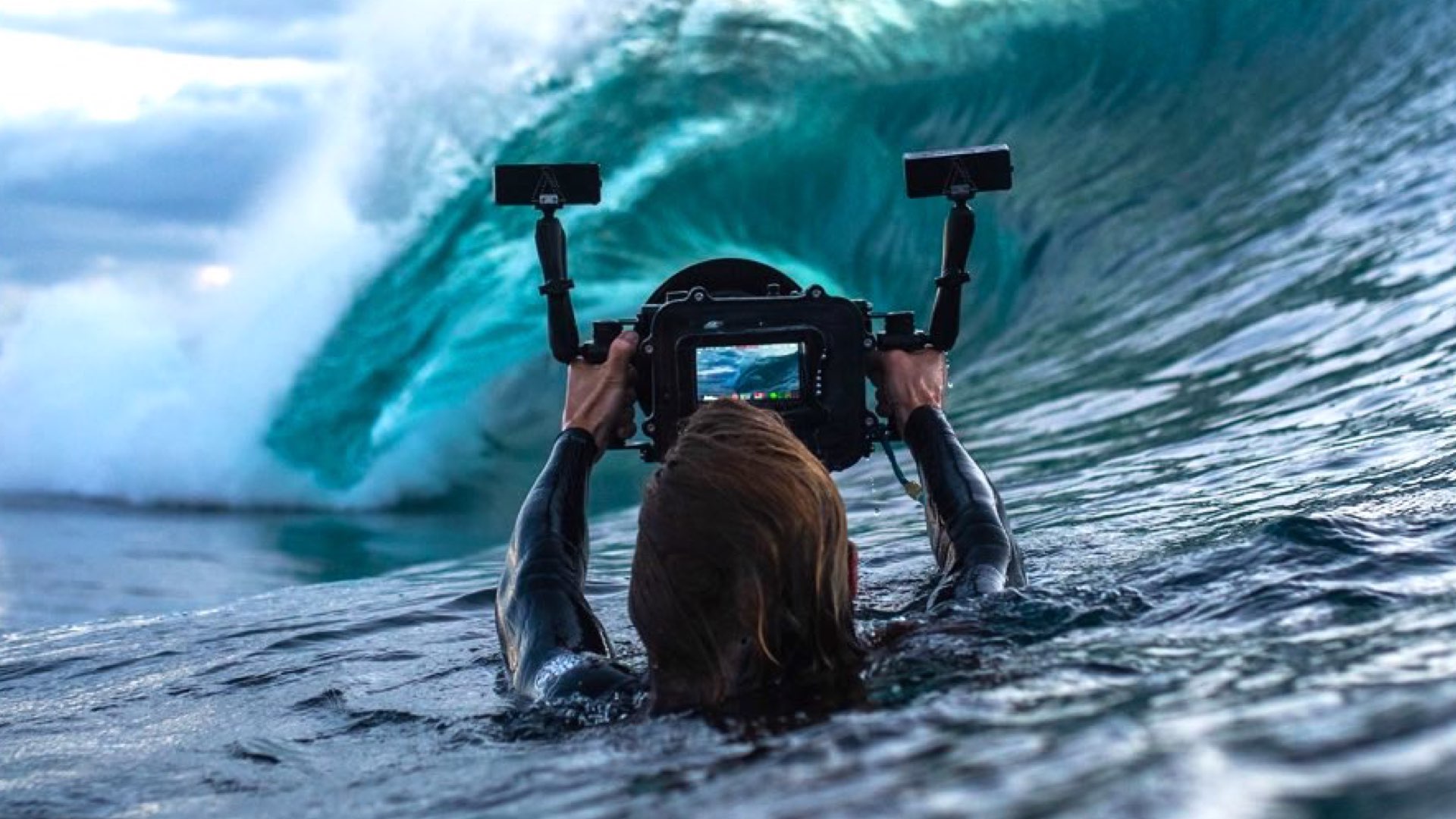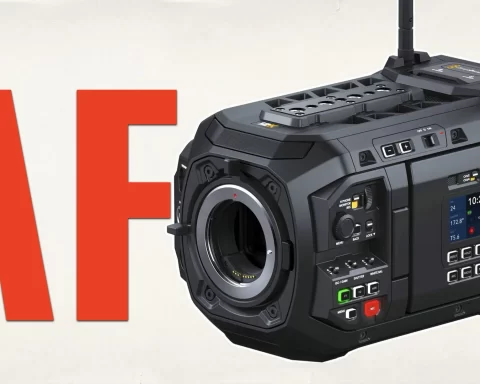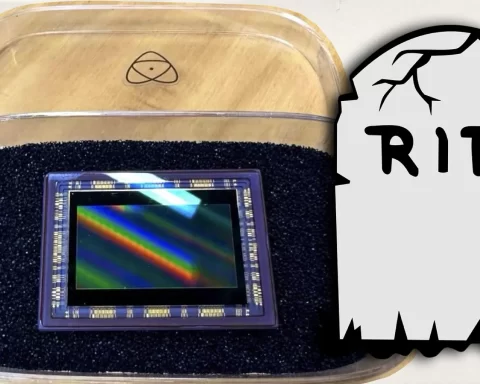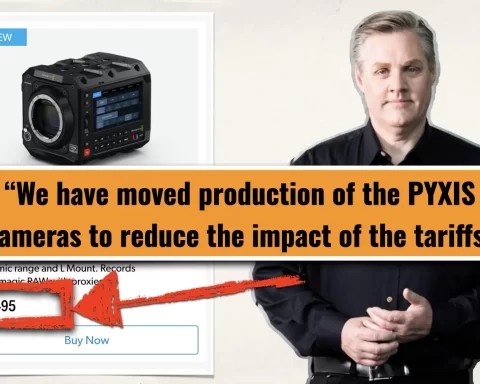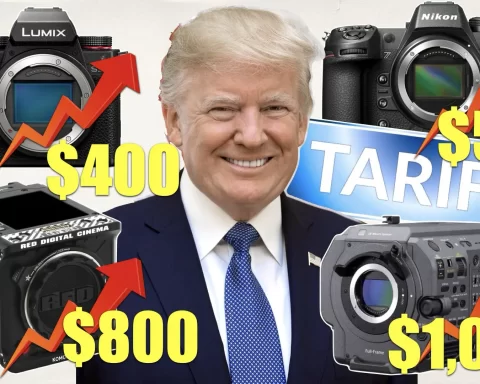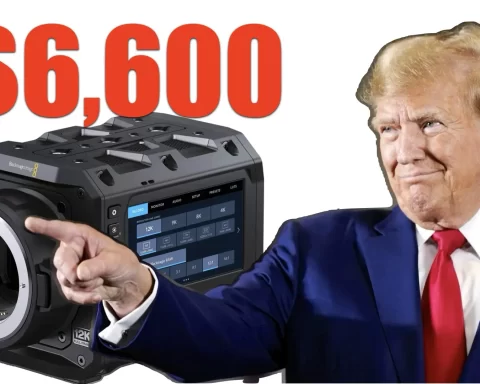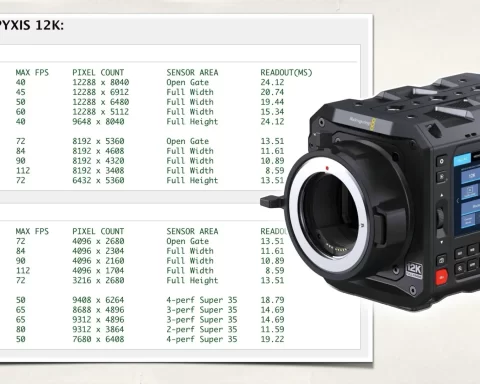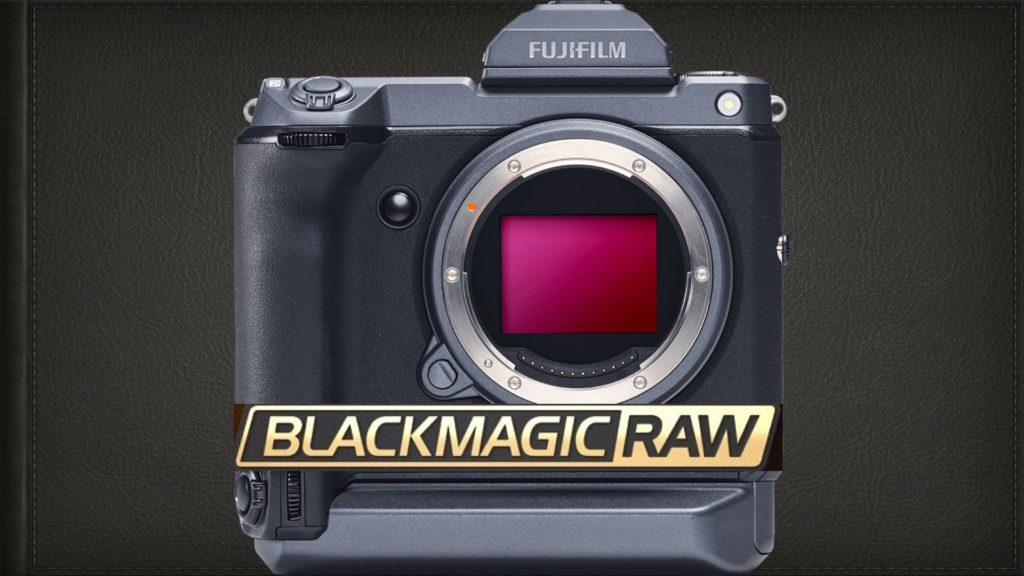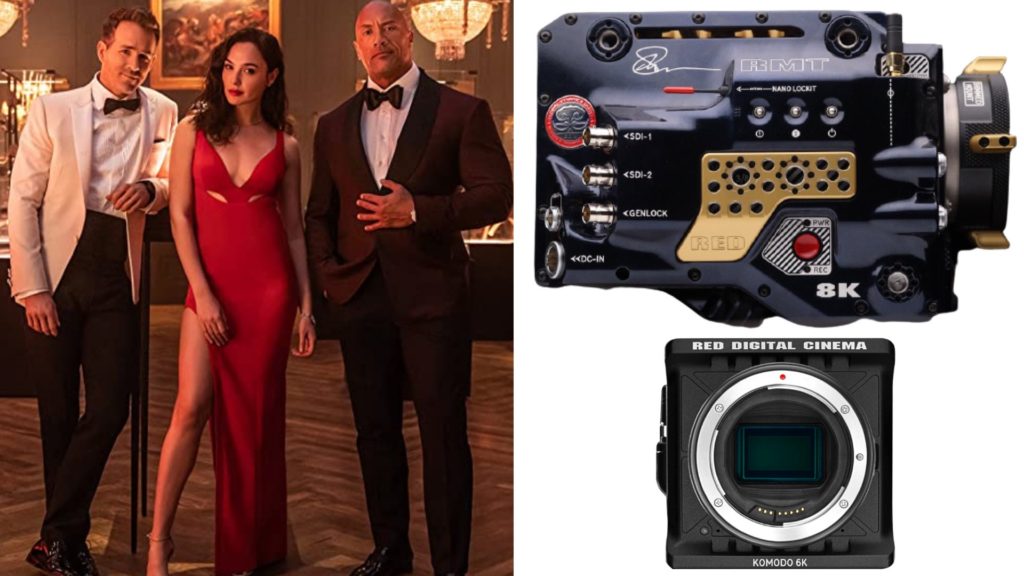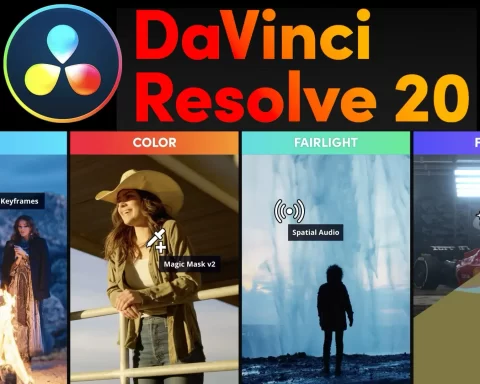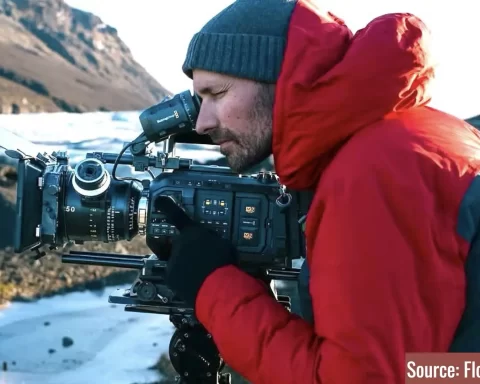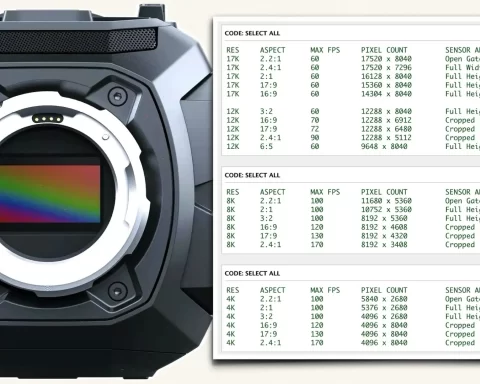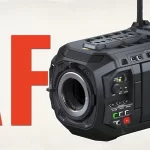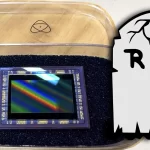In this article, underwater cinematographer Adrian Emerton sheds light on one of the most demanding expertise in our industry. Filming surfers is a serious challenge that involves a lot of filmmaking factors. This profession is not for the faint-hearted, and only high skilled camera operators and swimmers are allowed to ‘dive’ into it. For the mission, Emerton used the Blackmagic Pocket Cinema Camera 6K paired with a dedicated Salty Underwater Housing. Read below his thoughts.
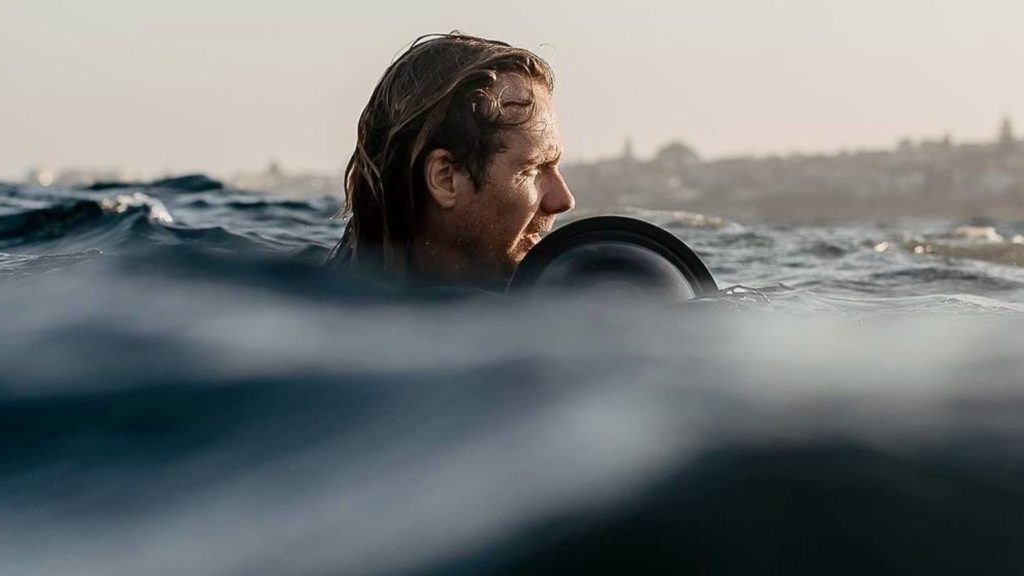
Surf cinematography
The ocean is one of the toughest, harshest and most demanding environment exists. Filming in the ocean demands pure expertise in camera operation. As an ocean DP, you have to think and move fast regarding many factors. For instance, you must trust your camera equipment, since there’s no backup. In the ocean, you can’t just pull your camera out of the water housing. Furthermore, there’s no room for mistakes, nor camera issues. All of this is amplified even more when you’re filming big waves surfers. Just imagine when a 7 meters wave hits you while you’re trying to set the focus, exposure, zoom, camera angle, and more parameters, in the middle of shooting.
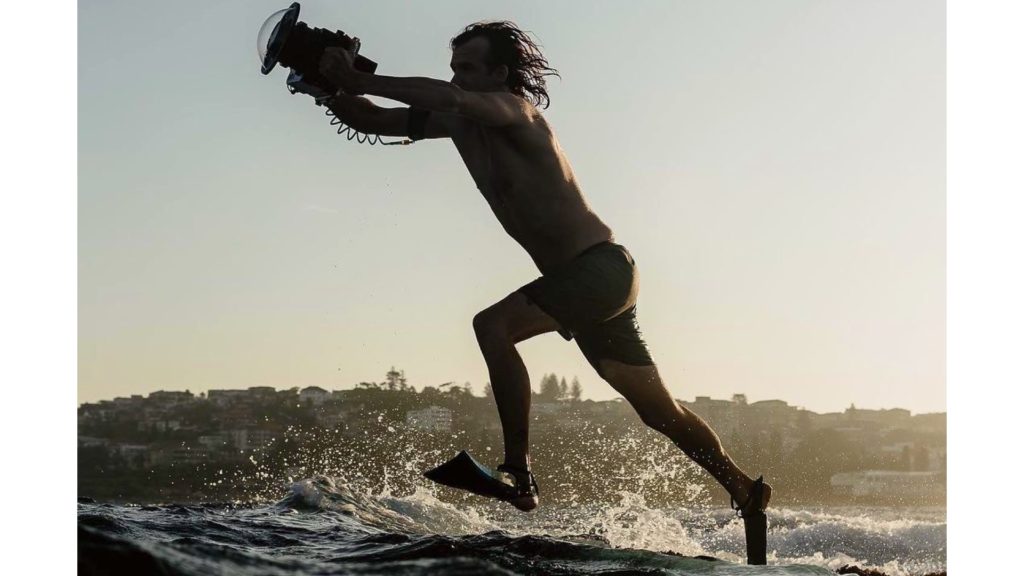
Utilizing small cinema cameras
“I’ve had all sorts of cameras in much larger underwater housings, which were a problem because of their extra buoyancy and lack of maneuverability. I’ve had some really scary moments being sucked over large waves with cameras being ripped from my hands.” says underwater DP Adrian Emerton in an interview with Blackmagic Design, when he talks about his last film, The Chase. Starring Mitchell Blewitt and filmed over four years across locations including; Tahiti, Cook Islands, South Australia, Tasmania, and N.S.W. ‘The Chase’ explores the essence of what it means to be a Bodyboarder who lives to chase for incredible oceanic moments and the adventures that surround them. For the film, Emerton chose the Blackmagic Pocket Cinema Camera 6K, paired with the Salty Underwater Housing. This compact setup allowed him “to tuck the camera into yourself, so you can pull back underneath the wave instead of being sucked over the top!”
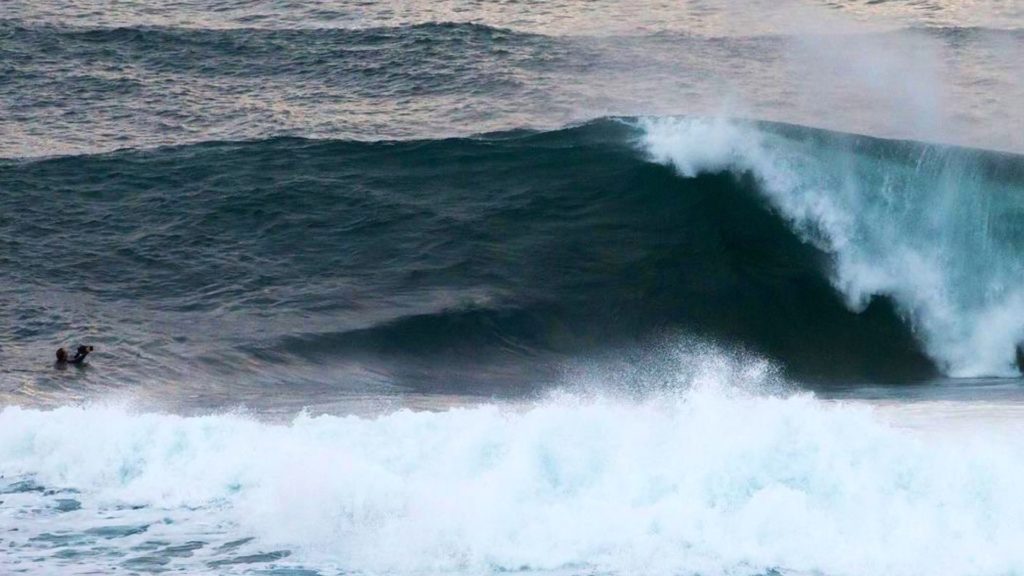
I’ve had all sorts of cameras in much larger underwater housings, which were a problem because of their extra buoyancy and lack of maneuverability. I’ve had some really scary moments being sucked over large waves with cameras being ripped from my hands.
DP Adrian Emerton
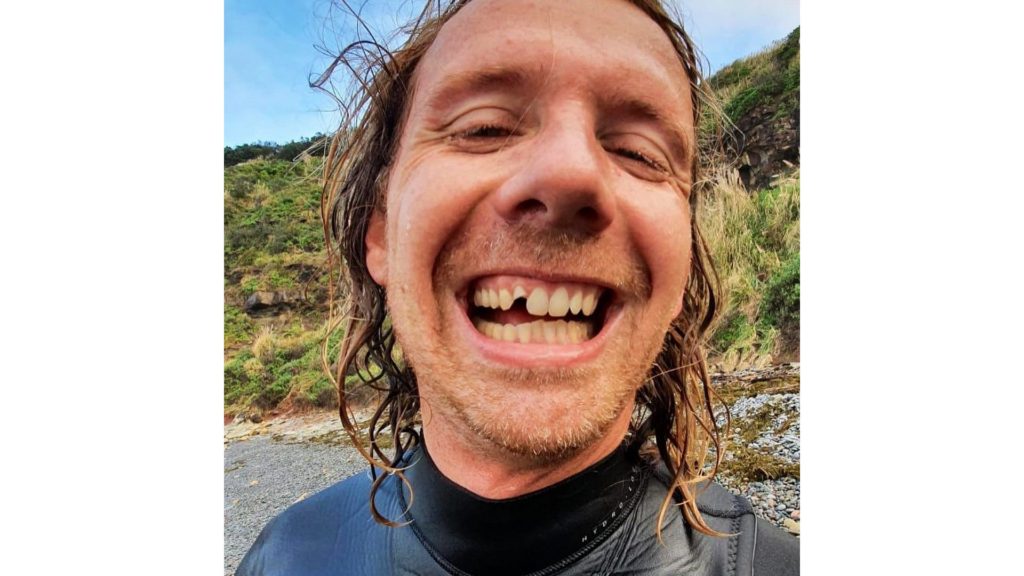
This profession is not for the faint-hearted
Dynamic range constantly changes
“Being above and below the water all the time, you need phenomenal dynamic range. You’re shooting in the craziest most unpredictable environment, where moving waves cause the light to change all of the time. The thing about shooting waves, is there are so many interesting colors to capture” Emerton explains. That’s the main advantage of shooting RAW underwater, so you can have the privilege of manipulating the shots in post, even when the exposure dramatically changes (for instance, when the wave hits and produces white waters).
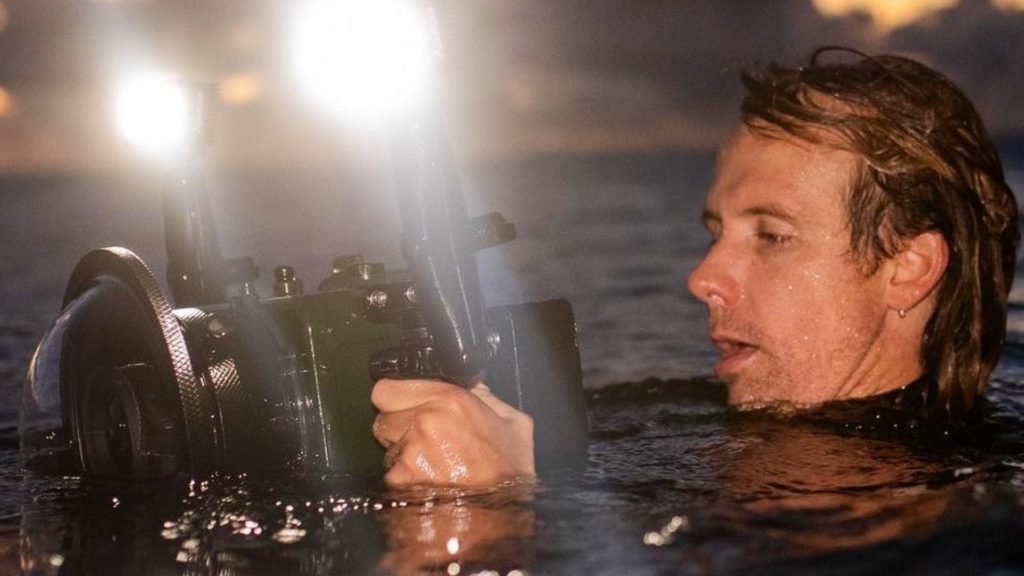
I am always jumping in the water before sunrise, I toggle my ISO using the preset button between ISO 1250 and 400.
DP Adrian Emerton
Exposure as a tricky parameter
Emerton looks at the skin tones of the surfer to get his exposure, no matter how small they may be in the frame. He repeats this process over and over, throughout the day as the light changes. Also, according to Emerton, when shooing surfers, a dual ISO is essential. “I am always jumping in the water before sunrise, I toggle my ISO using the preset button between ISO 1250 and 400. I can do this super quickly with the dial on the Salty housing. I find that ISO 1250 is the sweet spot for Blackmagic RAW for low light in terms of noise. Toggling between the two ISOs gives me enough dynamic range in Blackmagic RAW” he adds.
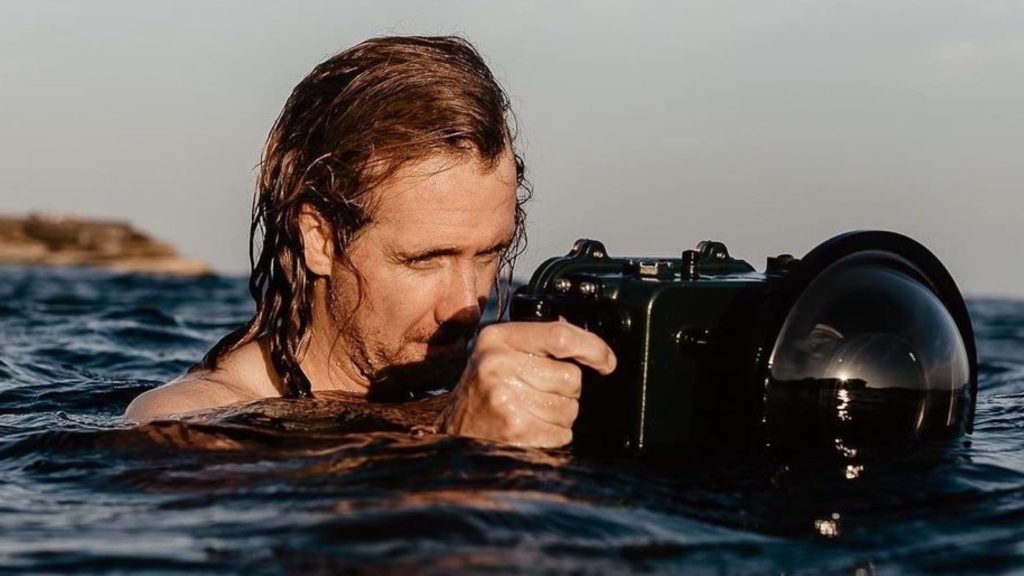
Using wide lenses
Wide-angle lenses are the weapon of choice when shooting surfers since you want all those big waves to be in the shot! For that project, Emerton utilized the 11-20mm Tokina and 18-35 Sigma Art lens. Those lenses are attached with the help of a dedicated port in the underwater housing.
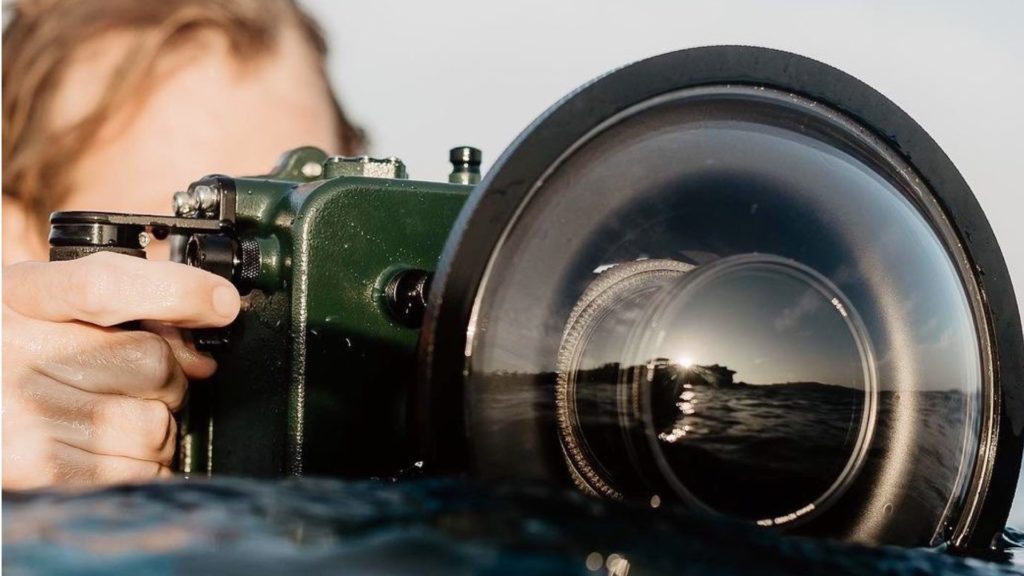
Salty Underwater Housing
The Salty underwater housing is machined from a block of aluminum, which makes it super tough. We wrote about this housing before as an option for underwater cinematography regarding the RED Komodo. “I also run a V-Lock mounted Powerbase Edge battery that mounts under the bottom of the camera. Having a more centered weight like this makes it neutrally buoyant. And certainly helps when shooting with bigger EF lenses, which can be a bit front-heavy. By using a V-Lock battery plus the internal battery gives me about 2.5hrs shooting in the water, which is pretty good!” Emerton explains. Also, what’s even more important when shooting in the ocean. is the heat dissipation of the housing. As the camera gets hot, the temperature of the water is much colder. In Salty Underwater Housing, the aluminum shell assists in heat management due to the materials’ thermal conductivity compared with plastic housings. Regarding the price, this housing costs $2,400. Note that this is NOT a dive housing. The depth rating is 20m / 66ft underwater (compared to a real dive housing that can reach 60m). Hence, this housing is for filming surfers and not divers.
Explore the tools below:
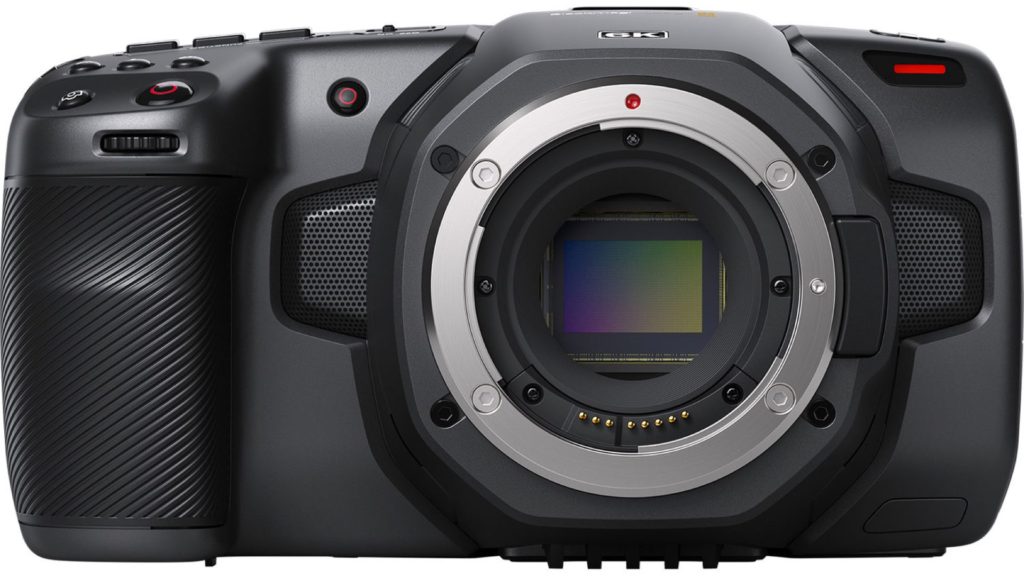
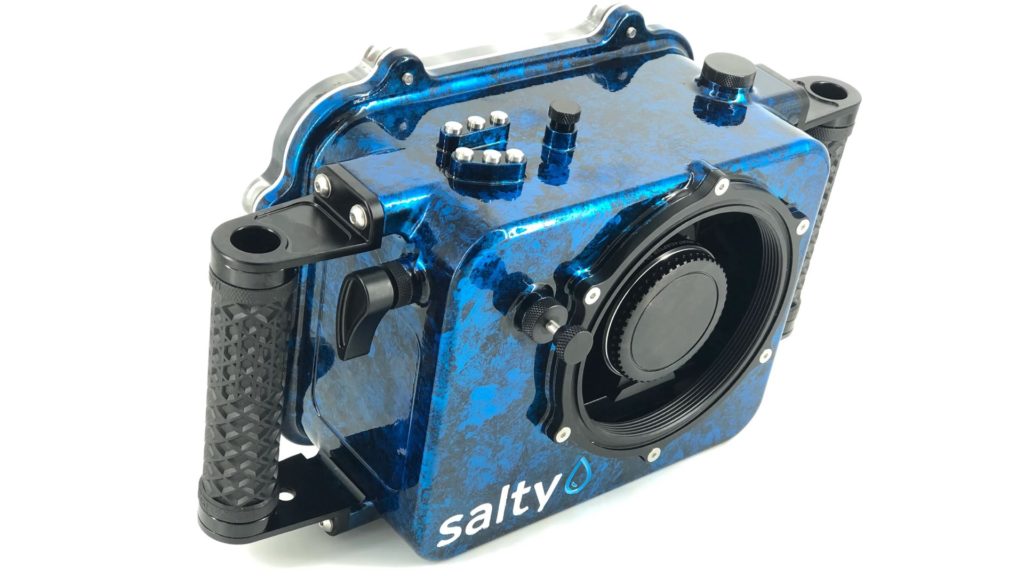
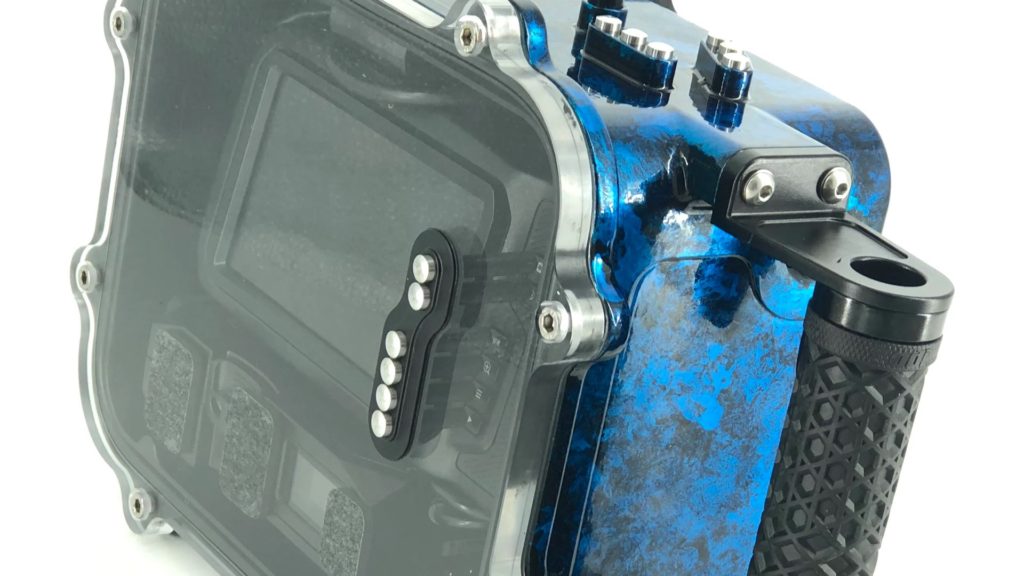
The depth rating is 20m / 66ft underwater (compared to a real dive housing that can reach 60m). Hence, this housing is for filming surfers and not divers.
Controlling the camera
The Salty housing has a bunch of dials that allow you to access the function buttons on the camera, while you are in the water. As Emerton elaborates: “By just scrolling the dial means I can instantly jump between False Color to Focus Peaking, and from LUT monitoring to Blackmagic RAW monitoring. When you’re swimming in the water for hours at a time, this stuff has to be easy like this. I am using False Color throughout the day, making sure I am always getting the right exposure for my skin tones.”
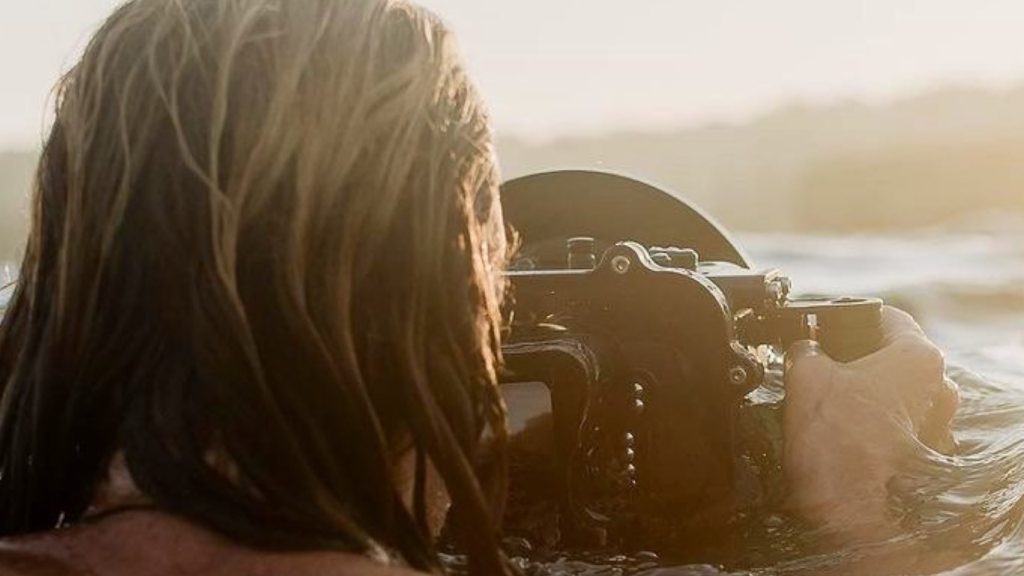
When you’re swimming in the water for hours at a time, this stuff has to be easy like this.
DP Adrian Emerton
The ideal FPS and sensor size
According to Emerton, he shoots at 50fps. “The 60fps in 6K 2:4:1 is another frame rate/resolution combination I use a lot, particularly when it comes to my over/under waterscape shots. Using the full width of the sensor, coupled with this wide aspect ratio, gives for a beautiful, cinematic look, conducive of how I feel when the ocean is viewed from the waterline.”, he says. “But the big waves always tend to be taller than my cropped image. Shooting a higher frame rate in the water means using wider lenses when the sensor is cropped, which I have a great solution for. I dream of a Pocket 6K Pro (mark 2) with 120fps and a full-frame sensor readout! Now that’s what I am wishing for, one day! This would truly be a game-changer for surf cinematography. That camera would truly change the world of surfing cinematography.”
Check out the trailer of THE CHASE:
Summary
As explained, being a big-wave cinematographer is one of the most dangerous, demanding, and challenging professions in our industry. You have to be highly skilled in all aspects, cinematography, and physically. Taking the most advanced camera into the water would probably grant you the best images. However, it may result in heavy housing, unfriendly setup, which can cause you serious pain to get the desired shots. Moreover, in the water, you are a sole operator, and with no backup, and thus, taking a RED or an ALEXA for this mission, can be proven as a two-edged sword. Also, when reading between the lines, a bigger sensor would be welcomed here, in order to capture these big waves with all their glory. Is there a chance Blackmagic will release a pocket camera with a large sensor? Let’s dream about it…
Product List
Here’re the products mentioned in the article, and the links to purchase them from authorized dealers.
- Blackmagic Design Pocket Cinema Camera 6K

